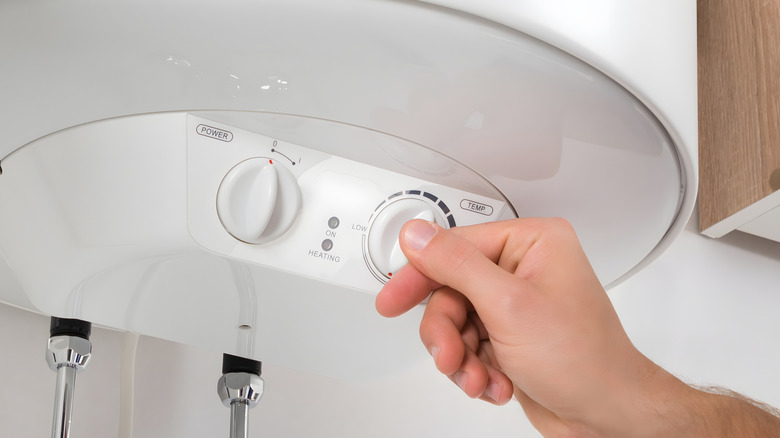Why Your Water Heater Isn't Heating Properly And Simple Steps To Fix It
Water that doesn't get hot, is rust-colored, or smells is often a sign that you need to replace your water heater — and fast. But in some cases, your water heater may stop working properly, such as not heating the water, and may just be in need of a small fix. It's common for heaters to display more issues as they break down; it's just something that comes with age.
On average, most water heaters will last about 10 years. However, before calling an HVAC technician and paying anywhere from $50 to $130 an hour for them to look at it, it's best to first try doing a bit of diagnosing yourself. With water heaters that are still relatively new, the problem usually comes down to a few common issues that keep your water from reaching the appropriate temperature. In many scenarios, the water heater may have faulty heating components, a tripped limit switch, or power issues involving the circuit breaker.
To nail down the culprit, you can inspect your water heater and circuit breaker and rule all of these issues out within a matter of minutes. Addressing water heater issues immediately is a simple way to keep your appliance running efficiently and can help you get a less expensive water bill as a result. Even if you have to call a plumber or an HVAC specialist at the end of the day, you'll save time and money by preventing potentially bigger problems down the line.
Ruling out circuit breaker and limit switch issues
If your water heater is supplying cold water, always check the circuit breaker to ensure the heater is powered up. Sometimes breakers trip due to issues like short circuits or electrical overloads. To check the heater, first unplug it. Next, head to your breaker box and locate the heater's tripped breaker. If the breaker is in the middle position, it means that it's been tripped. If this is the case, push it back toward the "On" position, which is toward the center of the breaker box. And if it's already on, try turning it off and then back on to see if this resets the heater.
If it doesn't, test the heater's breaker specifically using a non-contact voltage tester to ensure functionality. If it's working, the only other thing to check is the heater's temperature limit switch. To do this, first turn the heater's breaker back off. Grab a pair of safety goggles and gloves, and then carefully remove the access panel and any insulation or safety guards around the heater. Locate the high-temperature shutdown button (aka "reset button") on the water heater, which should be above the upper thermostat.
Press the button and then close the panel. Next, go back to your circuit breaker and turn it back on. Give the water heater 30 to 40 minutes to heat the water in the tank. If it's still cold, a heating element is likely faulty. In this case, you'll need to contact a plumber or HVAC technician to swap it for a new one. Before hiring a plumber, be sure that they're licensed, bonded, and insured.

